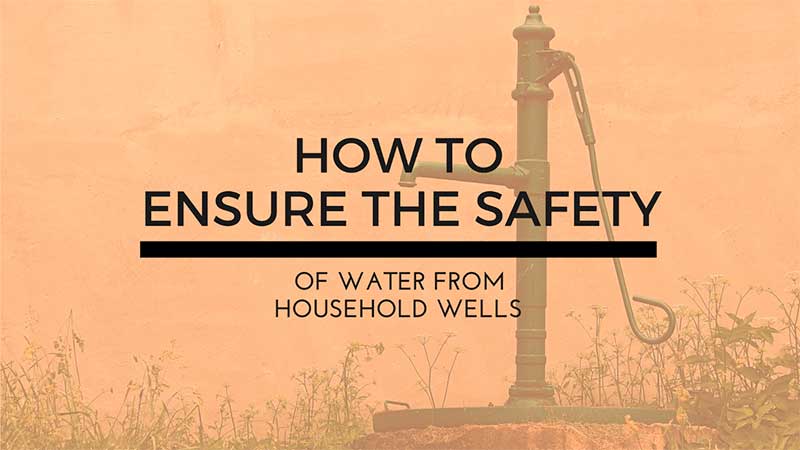Posted by Floralyn Teodoro on Oct 26th 2017
How to Ensure the Safety of Water from Household Wells
Unlike public water systems, water from private or household wells do not have experts regularly checking on them. If you’re part of the population sourcing their water from private wells, here’s how you can ensure your water’s safety.

In the U.S., over 15 million households rely on private wells for their water supply. But unlike public water systems, these private wells aren’t regularly checked and maintained by experts making them more prone to different types of contamination. Sourcing water from private wells needs special precautions to ensure its safety.
Possible sources of contaminants
Although most U.S. groundwater is deemed safe for human use by the U.S. Environmental Protection Agency (EPA), you still need to be aware of any possible source of contamination near your area. These possible sources include:
- Septic tanks. Improperly built or poorly located septic systems for household wastewater can leak and contaminate your groundwater supply.
- Livestock yards. Like septic tanks, livestock yards can leak manure and other wastes into your groundwater supply and carry bacteria like E. coli.
- Other sources of contaminants that can put the quality of your groundwater supply at risk are petroleum tanks, fertilizer storage, manure stacks, chemical spills from local industrial sites, abandoned tanks and piping, and a lot more.
Knowing the possible threats and sources of contaminants in your area will help you determine which kind of tests you need for your home.
Spotting signs of water problems
According to the EPA, there are a lot of noticeable signs of groundwater contamination you must keep an eye on and be wary of. See below:
|
LIST OF NOTICEABLE SIGNS / PROBLEMS |
||
|
VISIBLE SIGNS |
TASTES |
SMELL |
|
scale or scum formation in water |
salty or brackish taste |
a rotten egg odor |
|
unclear or turbid water |
alkali or soapy taste |
a detergent odor |
|
green and brown-red stains on faucets and sinks |
metallic taste |
Gasoline or oil smell |
|
cloudy water |
chemical taste |
musty or earthy smell |
|
|
||
If you’re starting to notice the above signs in your household water supply, it’s recommended to have your well or water supply checked. Other serious problems like the presence of bacteria, heavy metals, and the like can only be found by laboratory testing. You can call EPA’s Safe Drinking Water Hotline, (800) 426 4791 for assistance.
Preventing water contamination
To ensure your household’s health and safety, you need to take extra measures in protecting your well from potential contamination and practice proper maintenance. With that, here are some of the basic steps you should take from now on:
- Identify potential contaminant sources in your area.
- In case you find problems in your well after checking, address and fix them immediately before they reach crisis levels to avoid expensive repairs.
- Never dispose of human waste, garbage, medications, fertilizers, fuels, herbicides, pesticides, and other similar pollutants near or around your well.
- Protect your well area as well. Be mindful of anything you place near it. Likewise, avoid or minimize the use of fertilizers and pesticides in your garden.
- Install a locking well cap or sanitary seal into your well.
- Subject your well to regular cleaning and maintenance. Always check for signs of cracking or corrosion, broken well cap, and settling of surface seals.
- Have your water tested once a year for coliform bacteria, heavy metals, nitrates, lead, and other contaminants. Have the test results explained as well.
- Invest in a whole house water filtration system specially designed for the unique and specific needs of your home.
Worry no more by ensuring the safety of the water you’re supplying your loved ones at home. Make sure your well water is “well” and free from any potential hazard that can put you and your loved ones’ health at risk. You deserve nothing less than the best!

